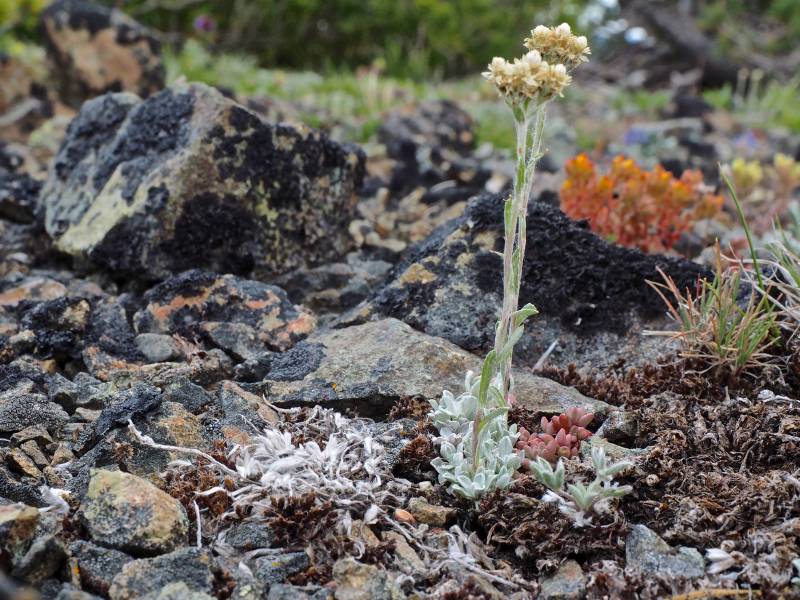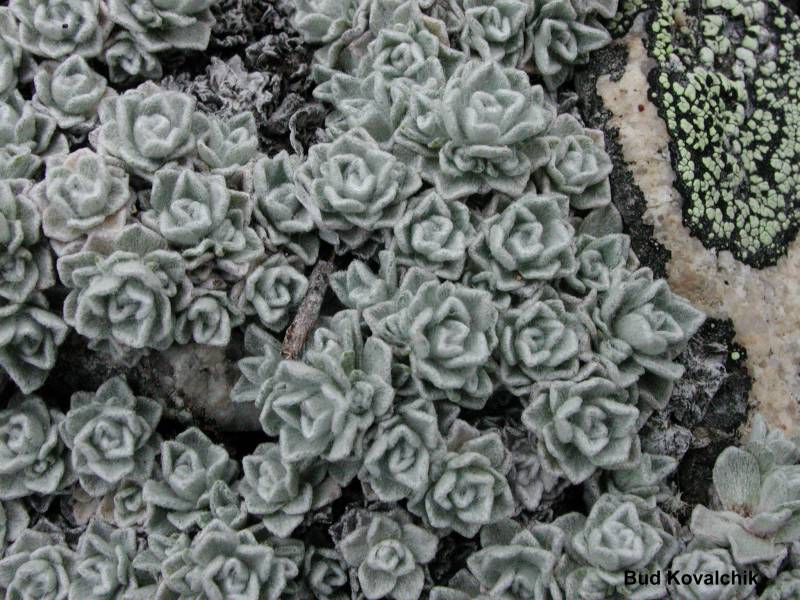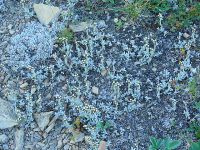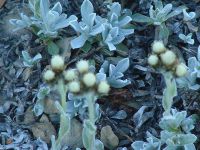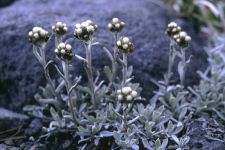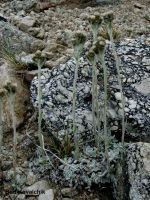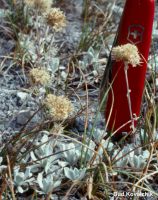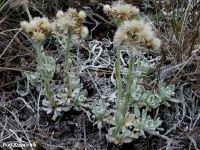Distribution: Occurring in the North Cascades Mountains in Washington; Alaska to Washington, Montana, and Wyoming, east across Canada; circumboreal.
Habitat: Alpine meadows.
Flowers: July-September
Origin: Native
Growth Duration: Perennial
Conservation Status: Not of concern
Pollination: Apomixis, butterflies, flies, wasps
Mat-forming, stoloniferous perennials seldom over 1 dm. tall
Basal leaves oblanceolate, up to 2.5 cm. long and 7 mm. wide, densely white-woolly on both sides; cauline leaves small and linear.
Heads several in a sub-capitate inflorescence; pistillate involucres 4-7 mm. high, woolly below, the scarious tips of the bracts dirty blackish-green, at least the inner slender and pointed; scarious portion of the bracts in staminate flowers often with white tips.
Achene
The small leaves and narrow, pointed involucre bracts blackish-green or brown in color should separate this species from others that might be found at high elevations.
Publication: Fruct. Sem. Pl. 2: 410. 1791.
Gnaphalium alpinum L.
PNW Herbaria: Specimen records of Antennaria alpina in the Consortium of Pacific Northwest Herbaria database
WA Flora Checklist: Antennaria alpina checklist entry
OregonFlora: Antennaria alpina information
E-Flora BC: Antennaria alpina atlas page
CalPhotos: Antennaria alpina photos

